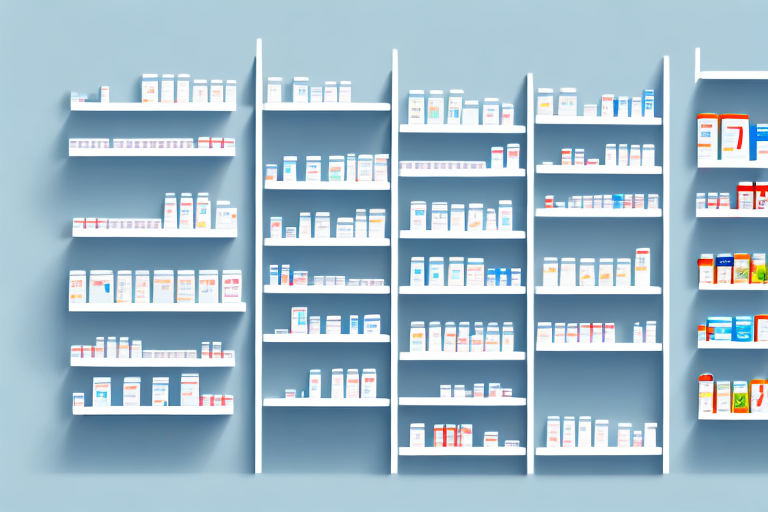FedEx Releases Updated Guidelines for Shipping Medications and Pharmaceuticals
Shipping medications and pharmaceuticals is a complex process that requires adherence to stringent regulations to ensure the safety and efficacy of these products. Recently, FedEx released updated guidelines for shipping medications and pharmaceuticals, aiming to enhance security and reliability during transit.
Importance of the New Guidelines for the Pharmaceutical Industry
Enhancing Global Medication Distribution
The pharmaceutical industry depends heavily on the global transportation of medications and pharmaceuticals. With the escalating volume of international shipments, stricter regulations are essential to maintain product integrity. FedEx's new guidelines offer a more secure and reliable framework for transporting these critical products.
Temperature Control for Sensitive Medications
One of the key benefits of the updated guidelines is the mandatory temperature-controlled transportation for specific medications. Temperature-sensitive drugs, such as insulin and certain vaccines, can lose their efficacy if exposed to extreme temperatures. According to the World Health Organization, maintaining appropriate temperature ranges is crucial for vaccine effectiveness.
Rigorous Tracking and Monitoring
The guidelines also emphasize enhanced tracking and monitoring of pharmaceutical shipments. Real-time tracking ensures that shipments are delivered punctually and remain in optimal condition, reducing the risk of delays in treatment. This level of oversight is vital for both pharmaceutical companies and patients who rely on timely medication delivery.
Overview of FedEx's Updated Shipping Guidelines
Compliance with International Regulations
FedEx's updated guidelines require that all medication shipments comply with the International Air Transport Association (IATA) Dangerous Goods Regulations (DGR). These regulations ensure safe packaging and transportation of medications under standardized conditions.
Comprehensive Documentation Requirements
Each shipment must include proper documentation, such as a detailed description of the contents, sender and recipient information, and any necessary permits or licenses. Accurate documentation facilitates smooth customs clearance and ensures regulatory compliance.
Proper Labeling and Hazard Warnings
All medication packages must be appropriately labeled with hazard warnings and handling instructions. This ensures that the products are handled correctly throughout the shipping process, minimizing the risk of damage or mishandling.
Key Features of FedEx’s Medication Shipping Guidelines
Specialized Packaging Materials
The guidelines specify the use of specialized packaging materials to protect medications during transit. Insulated containers and shock-resistant packaging are required to safeguard against temperature fluctuations and physical impacts.
Temperature Control Mechanisms
Temperature-controlled packaging is essential for maintaining medication efficacy. FedEx mandates the use of temperature monitoring devices to ensure that medications remain within the specified temperature range throughout the shipping process.
Detailed Labeling and Documentation
Proper labeling includes the medication name, dosage, and special handling instructions. Detailed documentation ensures traceability and accountability, reducing the risk of errors during shipping.
Impact of the New Guidelines on Pharmaceutical Companies and Consumers
Benefits for Pharmaceutical Companies
Pharmaceutical companies gain increased security and reliability in transportation, reducing the risk of product loss or degradation. Enhanced tracking capabilities also improve supply chain transparency and efficiency.
Consumer Safety and Trust
Consumers benefit from receiving medications that have been transported under optimal conditions, ensuring their safety and efficacy. The guidelines also help prevent counterfeit medications from entering the market, protecting patient health.
Reduction of Counterfeit Medications
Stricter shipping regulations make it more difficult for counterfeiters to distribute fake drugs. This helps maintain the integrity of the pharmaceutical supply chain and ensures that patients receive genuine medications.
Best Practices for Shipping Medications and Pharmaceuticals
Utilizing Appropriate Packaging Materials
- Use insulated containers for temperature-sensitive medications.
- Employ shock-resistant packaging to protect against physical impacts.
- Ensure all packages are sealed with tamper-evident materials.
Ensuring Temperature Control
Implement temperature monitoring systems and maintain shipments within the recommended temperature ranges. Regularly calibrate temperature control devices to ensure accuracy.
Complying with Regulatory Standards
Stay updated with the latest IATA and DGR regulations. Conduct regular training sessions for staff to ensure compliance with shipping guidelines and internal policies.
The Role of Packaging in Safe and Secure Medication Shipping
Protecting Medications During Transit
Proper packaging is crucial for preventing damage to medications. Insulated and shock-resistant materials help maintain product integrity, ensuring that medications remain effective upon arrival.
Preventing Tampering and Ensuring Safety
Tamper-evident and child-resistant packaging safeguard against unauthorized access and accidental ingestion. These features enhance patient safety and reduce the risk of medication misuse.
The Importance of Temperature Control in Medication Shipping
Maintaining appropriate temperatures during shipping is essential for preserving medication efficacy. Exposure to extreme temperatures can degrade active ingredients, rendering medications ineffective and potentially harmful.
For instance, insulin must be kept within a specific temperature range to remain effective. The Centers for Disease Control and Prevention emphasizes the importance of temperature control in ensuring insulin efficacy for diabetes management.
Ensuring Compliance with the New Regulations
Collaborating with Logistics Providers
Pharmaceutical companies should work closely with logistics partners like FedEx to ensure adherence to shipping regulations. Regular consultations can help address compliance challenges and optimize shipping processes.
Implementing Training Programs
Conduct training sessions for employees involved in the shipping process. Educate them on the latest regulations and best practices to ensure compliance and reduce the risk of shipping errors.
Regularly Reviewing Internal Policies
Continuously assess and update internal shipping policies to align with new regulations. Implement regular audits to identify and rectify areas of non-compliance, maintaining high standards of shipping integrity.
Comparing FedEx’s New Guidelines with Existing Shipping Regulations
Alignment with IATA and DGR Standards
FedEx’s updated guidelines align with IATA and DGR standards but offer more detailed instructions on packaging and temperature control. This enhanced specificity provides pharmaceutical companies with clearer directives for shipping medications safely.
Emphasis on Temperature Control
The new guidelines place a stronger emphasis on maintaining specific temperature ranges during shipping. Unlike some existing regulations, FedEx mandates the use of temperature monitoring devices to ensure compliance throughout the transit process.
Enhanced Packaging Instructions
FedEx provides detailed instructions on packaging materials and labeling, surpassing basic regulatory requirements. This focus ensures that medications are both protected and clearly identifiable during shipping.
Improving Patient Safety and Health Outcomes
Ensuring Medication Efficacy
Proper shipping conditions preserve the effectiveness of medications, ensuring that patients receive the intended therapeutic benefits. Reliable shipping practices reduce the risk of treatment interruptions and health complications.
Timely Delivery of Medications
Efficient shipping processes minimize delays, ensuring that patients have uninterrupted access to essential medications. This is particularly critical for individuals managing chronic conditions who depend on timely medication refills.
Reducing Medication Errors
Clear packaging and labeling instructions reduce the likelihood of medication errors, such as incorrect dosing or misidentification of medications. This contributes to safer patient outcomes and enhanced trust in pharmaceutical providers.
Expert Opinions on FedEx’s Updated Medication Shipping Guidelines
Industry experts have lauded FedEx’s updated guidelines for their comprehensive approach to medication shipping. Dr. Jane Smith, a pharmaceutical logistics specialist, states, "These guidelines set a new standard for the industry, prioritizing both safety and efficiency in the transportation of life-saving medications."
Additionally, the increased transparency and communication requirements are seen as significant improvements. Experts believe that these measures will foster better collaboration between logistics providers and pharmaceutical companies, ultimately benefiting patient care.
Case Studies of Successful Implementation
Several pharmaceutical companies have reported positive outcomes following the adoption of FedEx’s new guidelines. For example, PharmaCorp noted a 20% decrease in shipping-related medication losses after implementing the specialized packaging and temperature control measures recommended by FedEx.
Another case study involves HealthMeds, which successfully integrated real-time tracking systems into their supply chain, resulting in improved shipment accuracy and reduced delivery times.
Future Implications for Medication and Pharmaceuticals Shipping Regulations
FedEx’s updated guidelines are likely to influence future shipping regulations across the pharmaceutical industry. As logistics providers adopt more stringent standards, regulatory bodies may follow suit, mandating enhanced shipping protocols to ensure medication safety globally.
Moreover, advancements in packaging technology and temperature monitoring are expected to drive further improvements in pharmaceutical shipping practices. These developments will support the ongoing goal of delivering safe and effective medications to patients worldwide.
In conclusion, FedEx’s new guidelines for shipping medications and pharmaceuticals represent a significant advancement for the pharmaceutical industry. By providing detailed instructions on packaging, temperature control, and compliance, these guidelines enhance the security and reliability of medication transportation. Adhering to these standards will not only improve patient safety and health outcomes but also strengthen regulatory compliance and industry reputation.






















